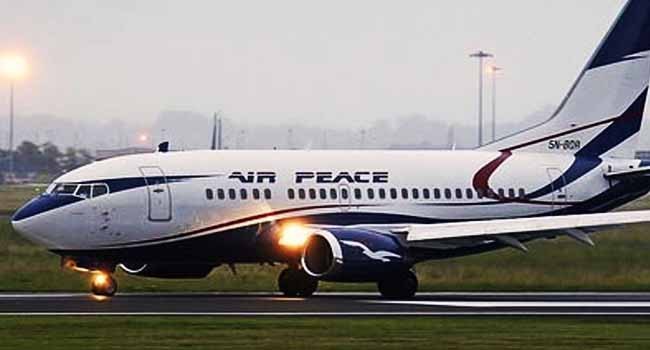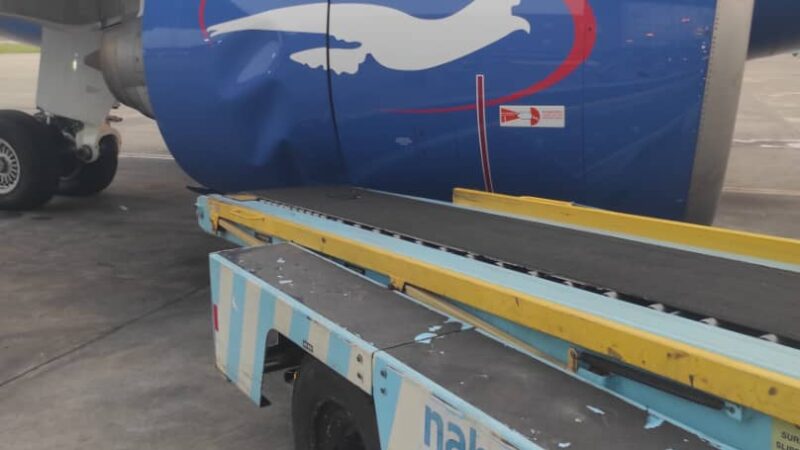Herbert Wigwe: NSIB receives preliminary report on fatal helicopter crash in California

The Nigerian Safety Investigation Bureau (NSIB) has obtained the preliminary report from the National Transportation Safety Board (NTSB) regarding the devastating Airbus Helicopter EC130B4 crash in California, which resulted in the loss of six Nigerian lives on February 9, 2024, near Halloran Springs.
The tragic accident, which claimed the lives of notable individuals including Nigerian businessman Dr. Herbert Wigwe, his wife Doreen Wigwe, son Chizi Wigwe, and former Chairman of the Nigerian Exchange Group, Mr. Abimbola Ogunbanjo, prompted a swift response from the NSIB, offering full cooperation to the NTSB as the lead investigating agency.
In accordance with the International Civil Aviation Organization (ICAO) Annex 13, granting access to investigation information on aviation accidents involving Nigerian-registered aircraft or citizens, the NSIB said it has been actively collaborating with the NTSB since the onset of the investigation.
The preliminary report shared by the NTSB provides crucial insights into the circumstances surrounding the accident. NSIB investigators, alongside relevant authorities and stakeholders, conducted on-site examinations and data analysis, revealing initial findings indicating catastrophic damage upon impact, leading to fragmentation of major components.
According to the report, the Airbus Helicopter EC130B4, registered as N130CZ and operated by Orbic Air, LLC, was on a journey from Bob Hope Airport in Burbank, California, to Boulder City Municipal Airport in Nevada via Palm Springs International Airport.
However, adverse weather conditions characterized by rain and snow were encountered during the flight, as reported by witnesses.
Eyewitnesses along Interstate 15 (I-15) reported observing a “fireball” in the vicinity, prompting calls to emergency services.
Subsequently, the wreckage of the helicopter was discovered in mountainous desert terrain near Halloran Springs, California.
Analysis of the accident site revealed a scattered debris pattern, indicative of a trajectory from an initial impact point. The helicopter’s fuselage was fragmented, with the cockpit and cabin destroyed.
Further examination revealed thermal damage to debris and vegetation, suggesting the force of the collision.
In a statement, Captain Alex Badeh, the Director-General of the NSIB, expressed gratitude for the cooperation extended by the NTSB, emphasising the commitment to work closely with relevant authorities to gather additional evidence and information necessary for a comprehensive understanding of the circumstances surrounding the tragic event.
Badeh stated, “We wish to express our gratitude for the cooperation extended by the NTSB, which has facilitated the sharing of vital information. We will continue to work closely with relevant authorities leading the investigation, including the NTSB, to gather additional evidence and information necessary for a comprehensive understanding of the circumstances that led to this tragic event.”
He added that while the preliminary report provides valuable insights, further investigations and analysis are required before any conclusions can be drawn regarding the cause of the accident.
As investigations progress, the NSIB said it remains committed to working closely with the NTSB and other relevant authorities to gather additional evidence and information necessary for a comprehensive understanding of the accident.
The preliminary report partly quoted: “The preliminary report on the Airbus Helicopter EC130B4, registered as N130CZ and operated by Orbic Air, LLC, under Part 135 regulations for on-demand flights, outlines crucial details surrounding the tragic incident. Departing from Bob Hope Airport in Burbank, California, the helicopter embarked on a journey to Boulder City Municipal Airport in Nevada via Palm Springs International Airport.
“However, during its flight, adverse weather conditions characterised by rain and a mix of snow were encountered, as reported by witnesses. Reports from law enforcement and eyewitnesses also indicated that several individuals travelling along Interstate 15 (I-15) observed a “fireball” in the area, prompting calls to emergency services.
“Subsequently, the wreckage of the helicopter was discovered in the high, mountainous desert and scrub-brush covered terrain near Halloran Springs, California. Analysis of the accident site revealed a scattered debris pattern about 300 ft along a 120° magnetic, indicating a trajectory from an initial impact point which was a 1.5 ft deep, 12 ft long and 10 ft wide ground crater, containing fragments of the right landing gear skid, cockpit wiring, and cabin floor structure.
“The right skid step protruded upward at a 45° angle at the extreme eastern edge of the ground crater. All major helicopter components were identified at the accident site. The helicopter’s fuselage was fragmented, and the cockpit and cabin were destroyed. Some debris and vegetation displayed thermal damage, indicative of the extent of the collision’s force.
“The flight control tubes and linkages leading up to the flight control servos were fragmented and continuity could not be verified. All three pitch control links were attached at the swashplate and blade pitch change horns. The main rotor blades were fragmented and broomstrawed, and the blade sleeves and tips were present.
“Data analysis utilised sources including automatic dependent surveillance-broadcast (ADS-B) data, operator personnel reports, and eyewitness accounts to reconstruct the flight path and sequence of events leading to the accident.”







